Prompt:
Create an end effector that is compliant and can successfully uproot weeds, both flat and upright, without breakage.
Constraints:
To Fit in the system's gantry
To Be light and swappable
Challenges:
To Be highly compliant to adapt to various weed types
To Uproot weeds (not break the stem)
End Effector Design Flow
Outline
January 2024 - April 2024
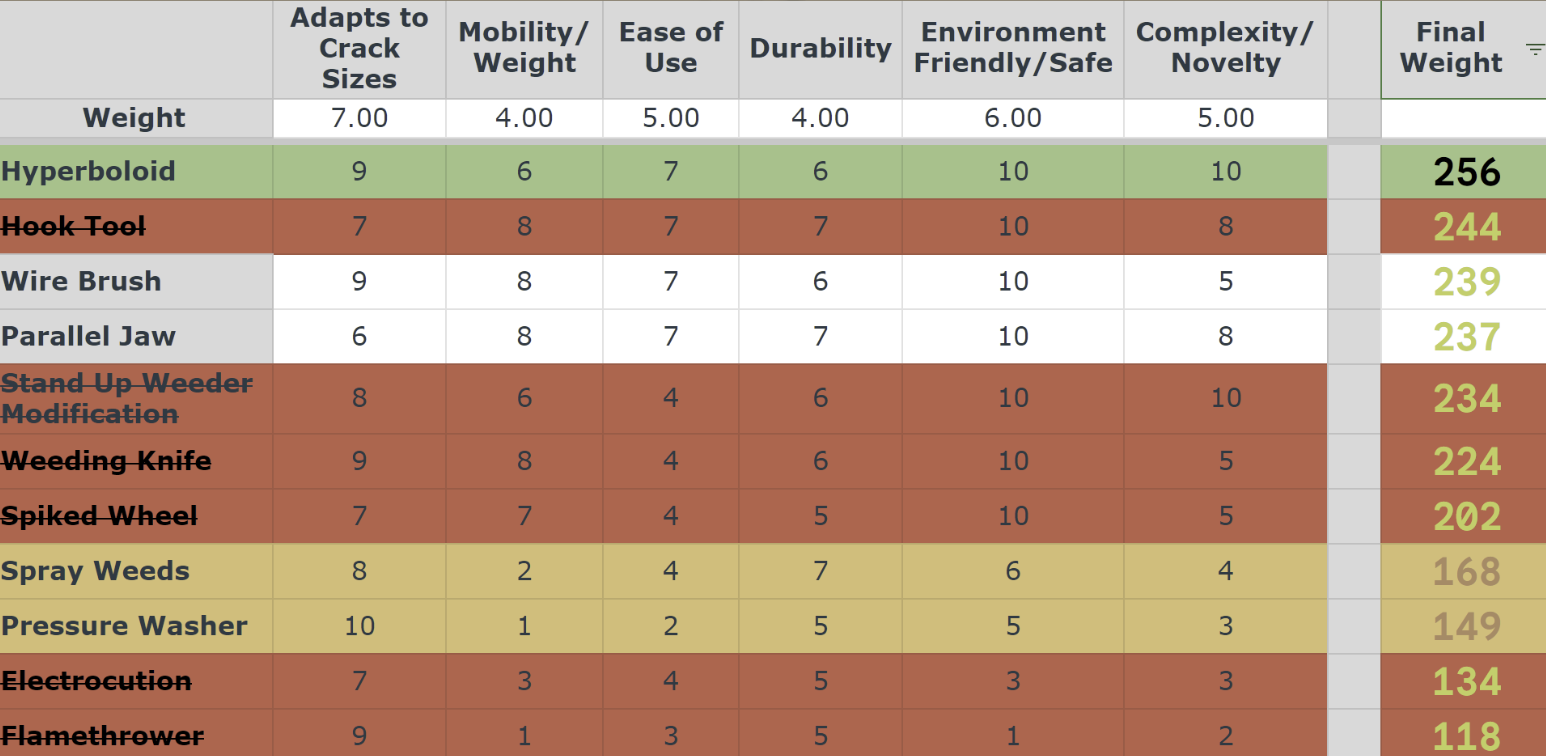
Hyperboloid
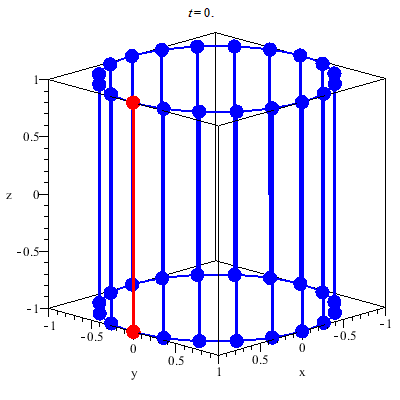
Decision Matrix
My team began by brainstorming different designs based on modifications of pre-existing weeding tools to fit our environment, such as the weeding knife, wire brush, and stand-up weeder. We considered mechanically simpler solutions to this problem such as pressure washing, electrocuting, and burning; however, these ideas brought up issues with safety and environmental harm. After meeting with Northeastern Landscaping, We had to eliminate any ideas involving sharp edges or points that could cause harm to pedestrians.
Ultimately, we selected the hyperboloid design due to its ability to adapt to various weed sizes. The hyperboloid tool was inspired by TWIZZ, a French invention for a twist-to-close cup. Its potential to become a 360-degree compliant gripping tool was appealing as it could grasp weeds tightly without shredding or crushing the stem.
Conclusions
A hyperboloid is neither a cone nor a cylinder, featuring a center of symmetry, and intersecting multiple planes to generate hyperbolas. More intuitively, a hyperboloid takes a cylinder and twists one end. The blue lines in the side figure represent the stretching material and tensile force lines of a cylindrical silicone membrane.
To actuate the hyperboloid’s unique geometry, the end effector rotates one end of the initial cylinder. Turning about the center increases the slope of the rotated hyperbola, closing their apexes into a singular point. This geometry is employed in SWIPER’s end effector system, where the main body acts as the rotating plane, and the ring acts as the stationary plane, creating the hyperboloid geometry from a silicone membrane.
End Effector
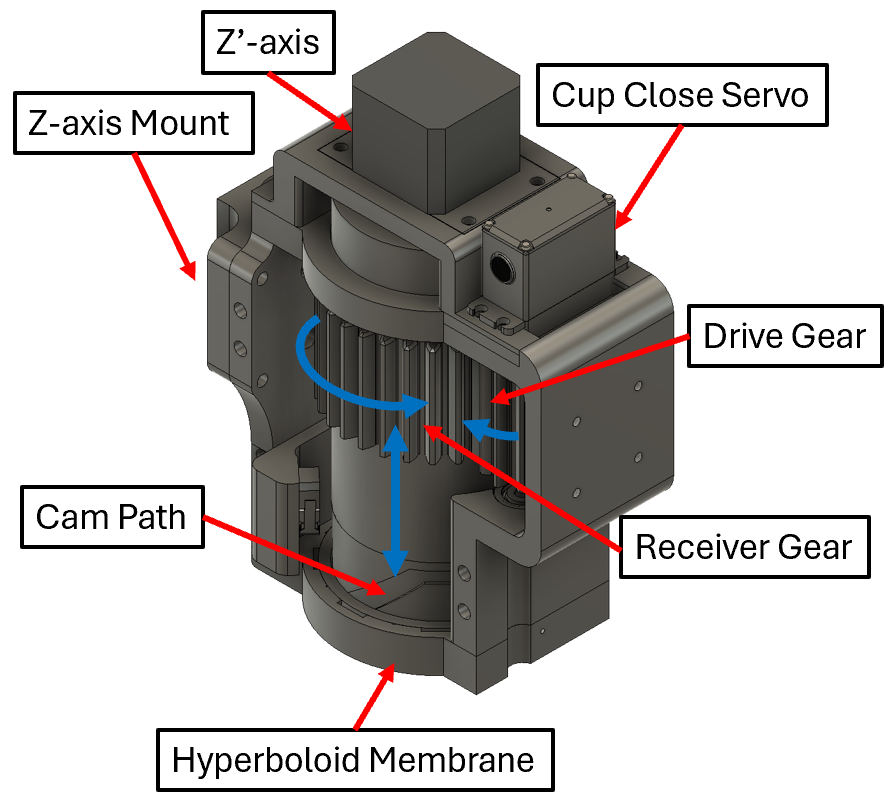
SWIPER’s end effector system serves to grasp and pull weeds, both flat and upright, from sidewalk cracks. This goal calls for a compliant design that can uproot weeds without ripping the stem.
To drive this system, three modes of motion are needed
1. Rotation to close the end effector’s membrane
2. Prismatic motion to actuate the wire gripper (z’-axis)
3. Prismatic motion to move the entire subsystem (z-axis).
For the first mode of motion, intended to grip the weeds, a compliant hyperboloid mechanism creates the basis for the full end effector design.
Design Spotlight

Mount Design Progress
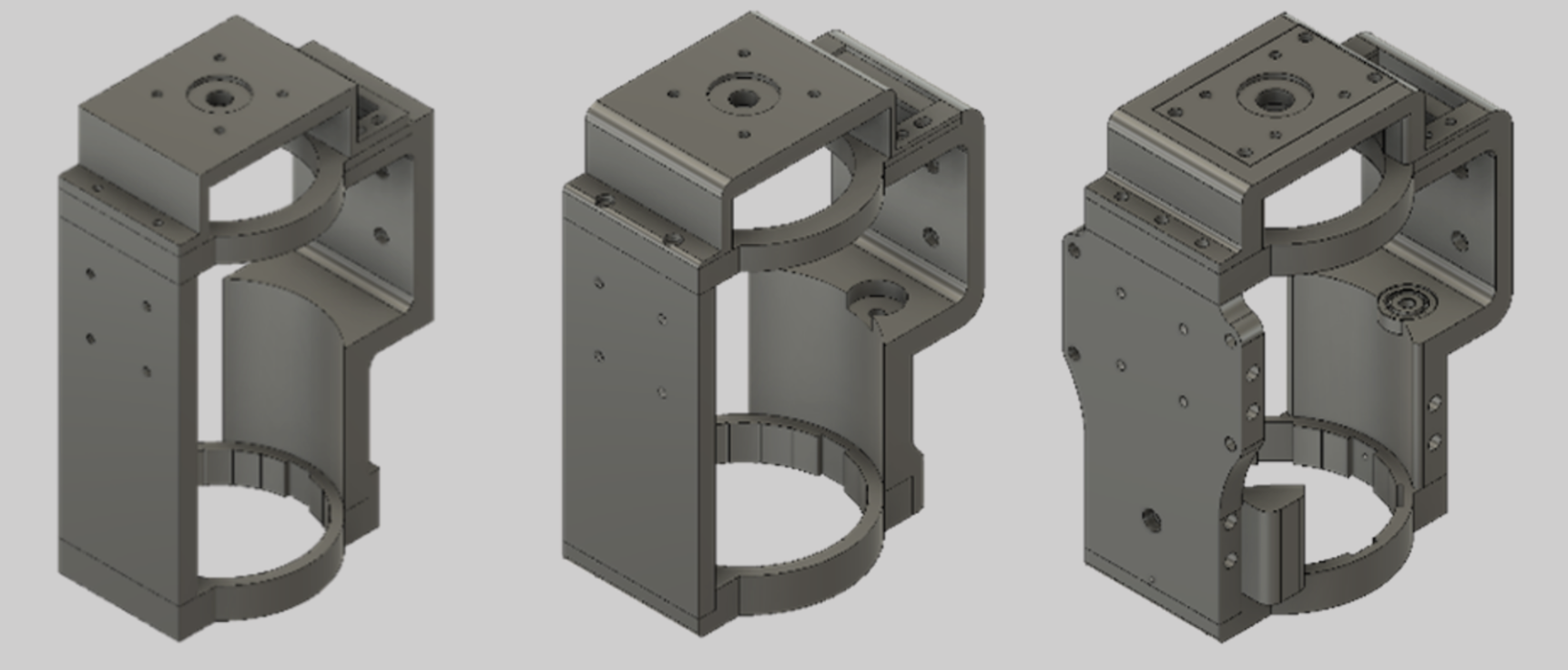
Wire Gripper
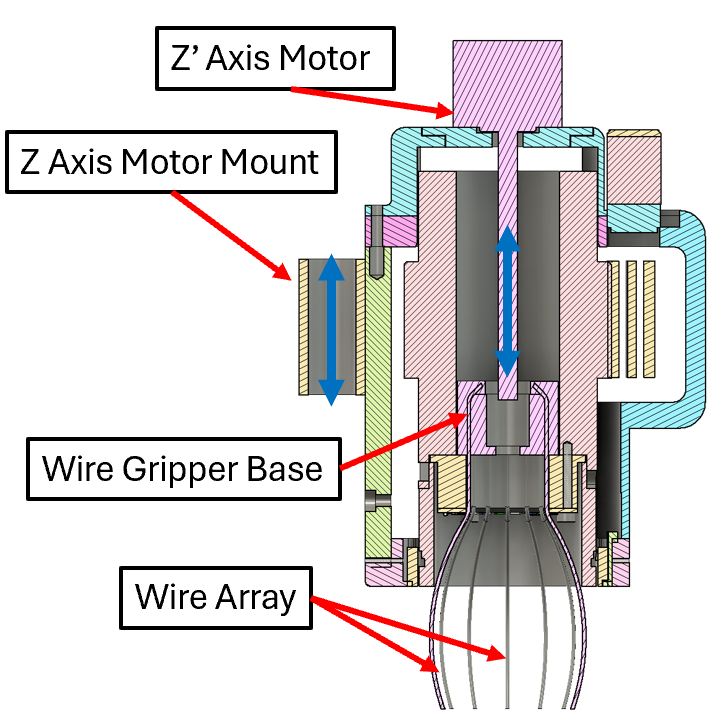
One drawback with this design was that it was difficult to grasp weeds that were flat or low to the ground due to the geometry of the hyperboloid. To solve this problem, we created the wire gripper, inspired by a conventional head scratcher.
Within the cylindrical body is a hexagonal through-hole that houses the wire gripper, which consists of a group of wire fingers that gather the weeds and draw them up into the body allowing the hyperboloid to securely grasp and uproot them. The fingers are anchored to a hexagonal nut on a lead screw, which moves the gripper up and down within the body of the end effector. They are curved such that when the gripper is fully extended, they splay out and cover a large surface area, but are forced inward upon retraction due to a small circular lip inside the main end effector. While retracted, the fingers are stored behind the lip of the hyperboloid, and do not interfere with its opening and closing motion.
Successes:
1. All mechanical subsystems function as intended
2. Pickcycle of ~40 seconds
3. Consistently uprooted on both simulated sidewalk and authentic outdoor terrain with an ~85% success rate
4. Accurately identified weeds and positioned gantry over them
Typical Failure Modes:
- Unable to reach weed due to uneven sidewalk/proximity to wall
- Particularly weak weeds breaking before uprooting
- Required pull Force Exceeds Hyperboloid Grip max 37.8 N (rare)
General Improvements:
- Fine tuning of the end effector procedure
- Integrating onboard weed storage
- Implementing additional compliance to account for uneven hardscapes





